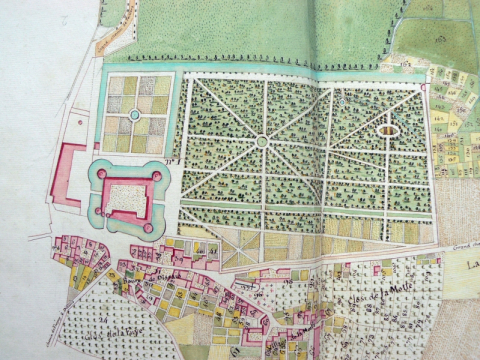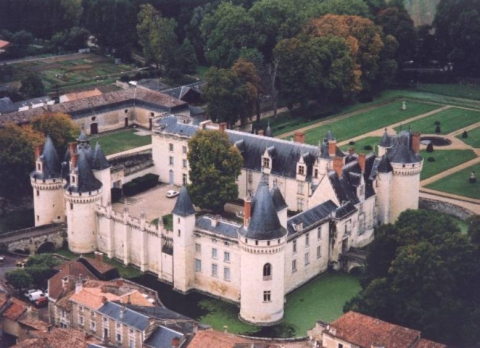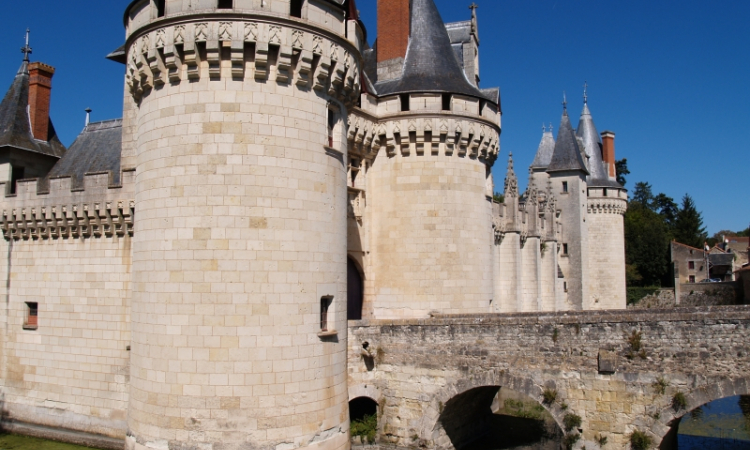Defense systems were authorised by letters patent of 11th January 1434 and signed by Charles VII. Hugues de Combarel, the predecessor of Pierre d'Amboise was allowed to build a fortress surrounded by walls, moats, gates and any other fortifications considered necessary. « Murs, fossez, paleiz, pont leveiz portaux, tours, guérites, barbacanes et autres fortifications et emparemens, telz que bon lui semblera ».
The building consists of a rectangle surrounded by round towers which give it an imposing image. The fortification of the building can be found in all the architectural elements. The presence of machicolation, the limited number of windows, the moats and draw bridges (later replaced by a fixed bridge ). In spite of these precautions, it was captured by the Admiral Coligny before the siege of Poitiers in 1569 during the wars of religion.
In 1789, bishop Martial-Louis Beaupoil of Poitiers was elected to the General assembly of the kingdom but in 1791 he refused to take the oath of the civil constitution of the clergy and fled abroad. The castle was seized and sold as a national treasure.
Since this period, the building has often been damaged. The collegiate church which overlooked the wall to the right of the castelet entrance was destroyed. In the oratory, mural paintings dating back to the 16 th century were damaged during refurbishment work. Some of these fresques still remain and are of interest during the visit of the castle.
In particular they represent « Adam and Eve », « King David », « Nabuchodonosor » and « Manassé » surrounding « the Fountain of Mercy », receiving Christ's blood.
Note, on this subject a Robert Favreau communication, former director of the center of higher education of medieval civilisation of Poitiers in the international colloquium organised by the University of Angers in 1998 : Favreau (Robert),
The inscriptions of the Chapel of the castle of Dissay and the environment of Anjou. 28 p.- Rome, French school of Rome.2000
After 1850, The Fruchard family who bought the castle began renovating the architecture both for the castle and the church, using stained glass windows and shutters from the collegiate church which had been taken down. Thanks to these works, the castle got registered as an « Historic Monument » at the end of the 20th century.



